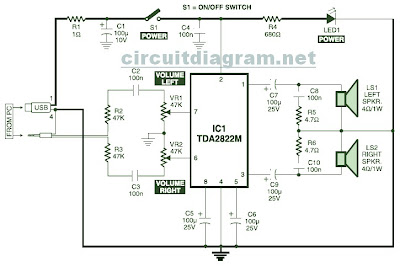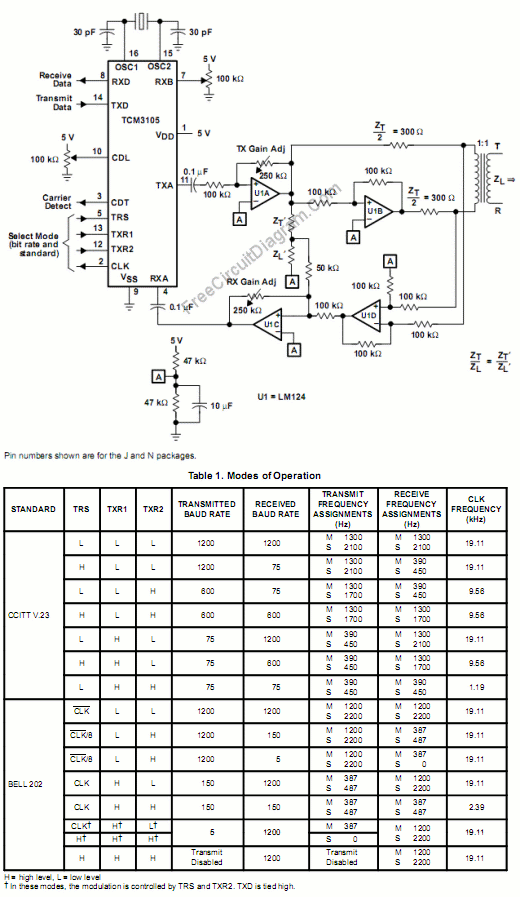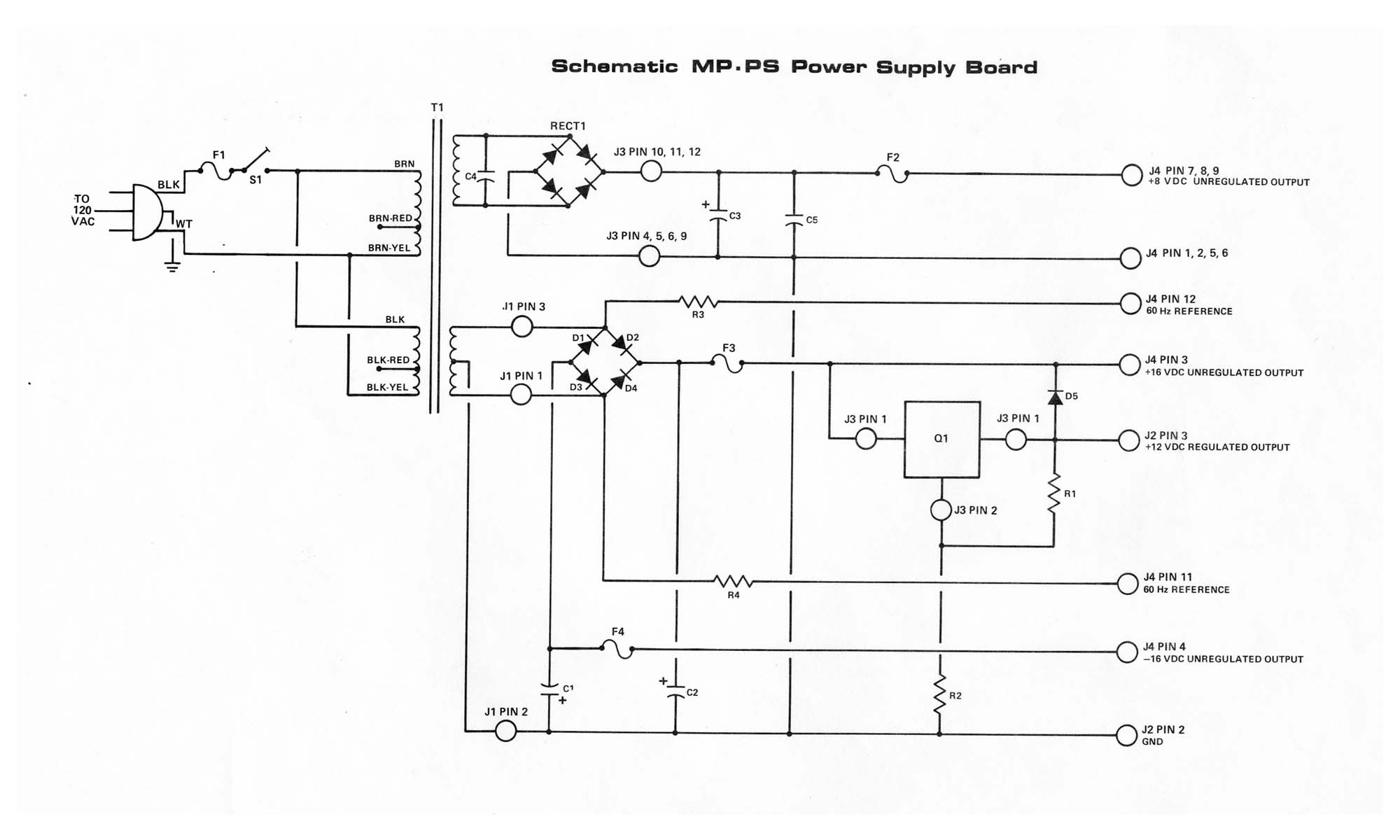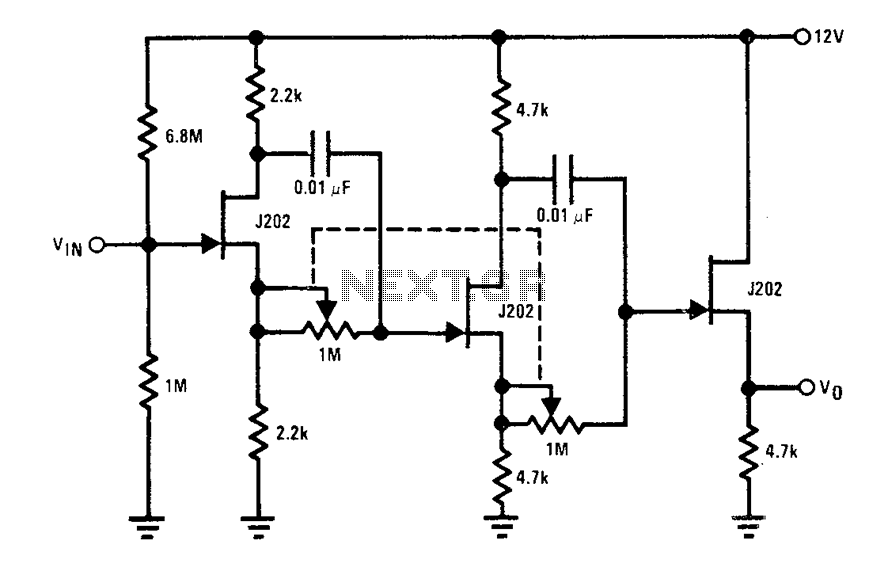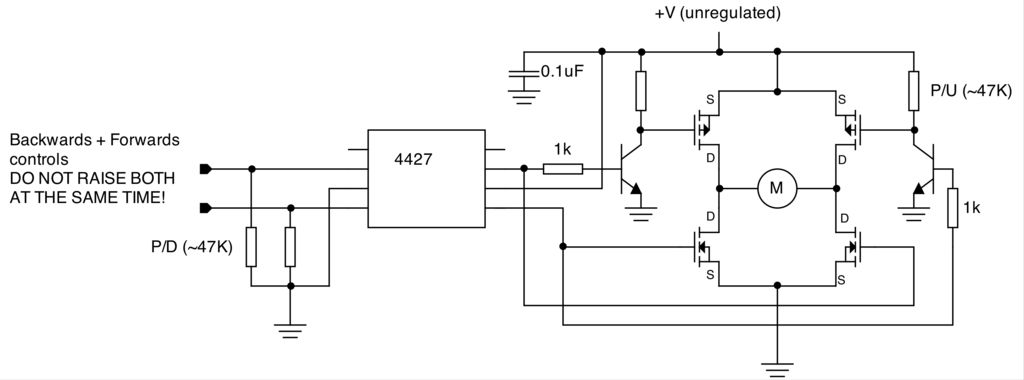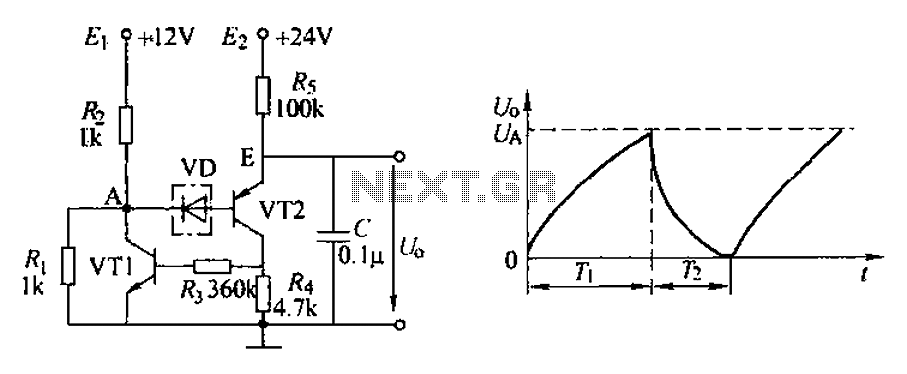
Power Amplifier Class D Circuit
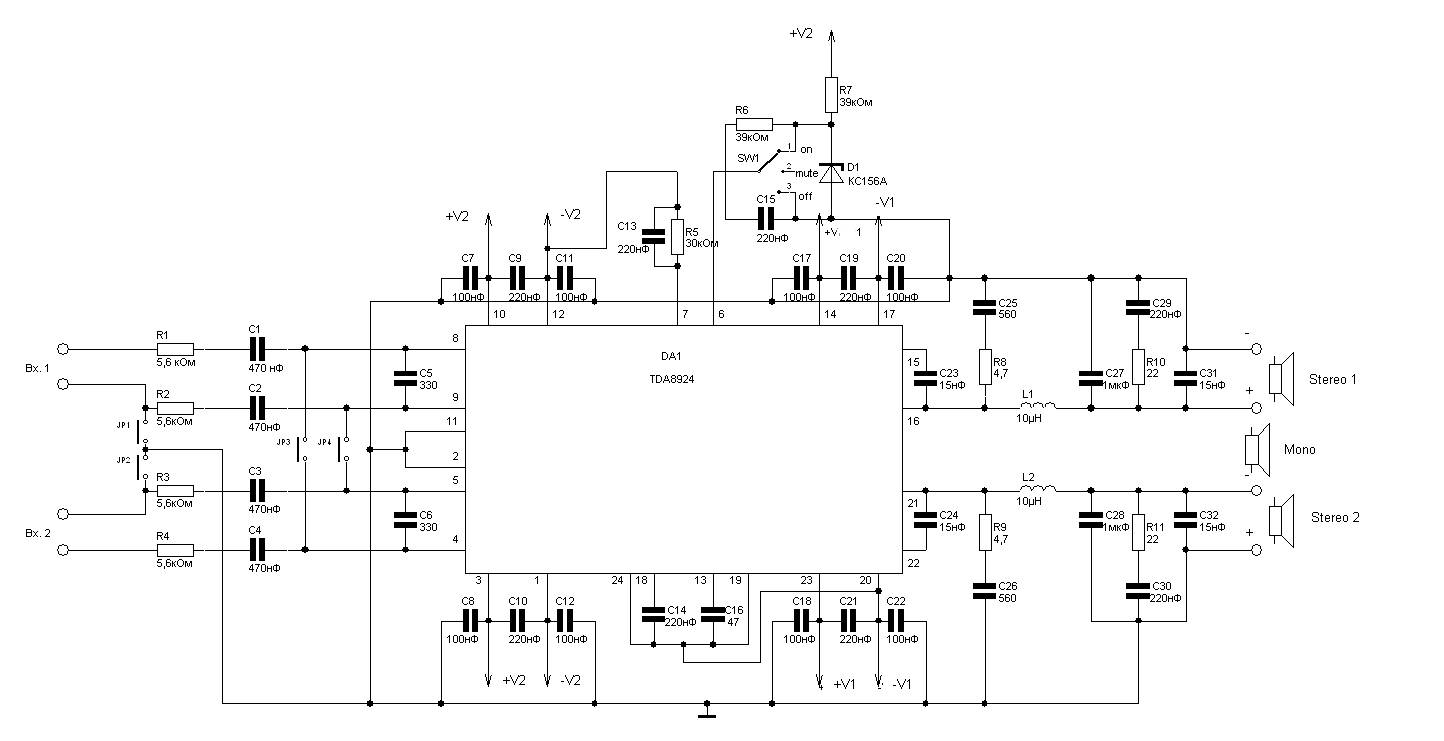
240W power amplifier circuit based on the TDA8924 class D design. This integrated circuit features short-circuit protection at the output, thermal protection, and safeguards against acoustic damage from inrush currents during power on and off. The schematic allows for two operational modes, enabling the amplifier to function in both stereo and mono bridge configurations, making it suitable for subwoofer amplification.
The TDA8924 is a versatile and efficient class D power amplifier capable of delivering up to 240W of output power, making it ideal for high-performance audio applications. The design incorporates several protective features that enhance reliability and longevity. Short-circuit protection prevents damage to the output stage by detecting and reacting to fault conditions, while thermal protection monitors the chip's temperature to prevent overheating. Acoustic protection is particularly important in audio applications, as it mitigates the risk of speaker damage due to sudden power surges when the amplifier is turned on or off.
The circuit design supports dual operational modes. In stereo mode, the amplifier can drive two separate channels, providing a full-range audio experience suitable for typical sound systems. In mono bridge mode, the amplifier combines the output of both channels to deliver increased power to a single load, making it particularly effective for driving subwoofers. This flexibility allows users to adapt the amplifier to various audio setups, whether for home theater systems, professional audio equipment, or custom audio projects.
The schematic should include key components such as capacitors for filtering, inductors for output stage stabilization, and resistors for setting gain and feedback levels. Proper layout considerations should be made to minimize electromagnetic interference (EMI) and ensure thermal dissipation. Additionally, power supply decoupling capacitors are essential for maintaining stable operation under varying load conditions. Overall, the TDA8924-based amplifier circuit represents a robust solution for high-power audio amplification needs.240W Power Amplifier class D circuit based TDA8924. The chip has a short-circuit proof output, thermal protection and acoustic protection from the inrush current when you turn on and off. The scheme provides two options turn on an amplifier both stereo and mono on a bridge. So this could be used for amplifier subwoofer. 🔗 External reference
The TDA8924 is a versatile and efficient class D power amplifier capable of delivering up to 240W of output power, making it ideal for high-performance audio applications. The design incorporates several protective features that enhance reliability and longevity. Short-circuit protection prevents damage to the output stage by detecting and reacting to fault conditions, while thermal protection monitors the chip's temperature to prevent overheating. Acoustic protection is particularly important in audio applications, as it mitigates the risk of speaker damage due to sudden power surges when the amplifier is turned on or off.
The circuit design supports dual operational modes. In stereo mode, the amplifier can drive two separate channels, providing a full-range audio experience suitable for typical sound systems. In mono bridge mode, the amplifier combines the output of both channels to deliver increased power to a single load, making it particularly effective for driving subwoofers. This flexibility allows users to adapt the amplifier to various audio setups, whether for home theater systems, professional audio equipment, or custom audio projects.
The schematic should include key components such as capacitors for filtering, inductors for output stage stabilization, and resistors for setting gain and feedback levels. Proper layout considerations should be made to minimize electromagnetic interference (EMI) and ensure thermal dissipation. Additionally, power supply decoupling capacitors are essential for maintaining stable operation under varying load conditions. Overall, the TDA8924-based amplifier circuit represents a robust solution for high-power audio amplification needs.240W Power Amplifier class D circuit based TDA8924. The chip has a short-circuit proof output, thermal protection and acoustic protection from the inrush current when you turn on and off. The scheme provides two options turn on an amplifier both stereo and mono on a bridge. So this could be used for amplifier subwoofer. 🔗 External reference
